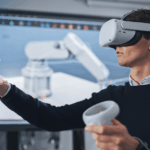Why the Learning Experience Design Matters Now
Corporate training has never been more complex. Between hybrid workforces, evolving technology, and shifting employee expectations, the role of a Learning Experience Designer (LXD) remains critical. Yet, many people misunderstand what an LXD actually does.
A common misconception is that Learning Experience Designers exist simply to “make learning fun.” While engagement is important, focusing only on entertainment risks overshadowing the very purpose of training; business impact. If you’ve ever walked away from a team-building exercise remembering how much fun it was but not recalling a single actionable skill, you’ve seen this problem in action.
The reality is much deeper. Learning Experience Designers blend psychology, user experience (UX) design, marketing tactics, and adult learning theory to create training that is engaging and effective. They don’t just build courses; they craft entire learning ecosystems that lead to meaningful learning journeys align with business goals.
Beyond Courses: The Core Responsibilities of a Learning Experience Designer
While the lines between roles like instructional designer, content developer, and eLearning developer often overlap, a Learning Experience Designer brings a distinct perspective. Their top three responsibilities stand out:
1. Designing the Entire Learning Ecosystem
LXDs look beyond the PowerPoint deck or Storyline module, implementing strategies for continuous learning in organizations. They ask:
- How easy is it for learners to access training?
- What happens before, during, and after the session?
- Does the flow fit naturally into the learner’s workflow?
For example, an LXD might recommend pre-work that primes learners for the session, soft-skills practice embedded in live training, and a recognition moment (like a digital badge or certificate) that reinforces accomplishment. They also ensure post-training support exists, whether through job aids, coaching, or embedded knowledge checks.
This holistic approach ensures training isn’t just an event but designed for engagement with strategies that actually work.
2. Collaborating Across Teams
Collaboration is one of the most important contributions of a Learning Experience Designer, though the extent of it can vary depending on an organization’s structure and L&D maturity. At their best, LXDs act as connectors, partnering with stakeholders across HR, IT, operations, and frontline management to design training that doesn’t stop when the course ends.
For example, during a rollout of new associate training, an LXD may work with managers to create post-training coaching guides that reinforce key skills on the job. In another scenario, the LXD might coordinate with the LMS administrator and business leaders to ensure that technology and content pathways support the intended learner experience.
Not every organization fully leverages this collaborative capacity, but when they do, outcomes are stronger. That’s because no single training module, no matter how engaging, can guarantee transfer of learning in isolation. Collaboration ensures learning is embedded in the culture, supported in daily workflows, and sustained long after the training event.
3. Keeping the Big Picture in Focus
Where others may focus on multimedia builds or storyboards, Learning Experience Designers ask whether the learning solution supports organizational goals. Their lens is wide: balancing stakeholder priorities, learner needs, and business outcomes in every design decision.
Business Outcomes: What Organizations Gain from a Learning Experience Designer
The presence of a Learning Experience Designer isn’t just a “nice to have.” It directly impacts business outcomes. Organizations can expect:
- Higher engagement: Training programs gain credibility with learners and stakeholders alike. When people buy in, they participate fully.
- Faster onboarding: By creating smoother, learner-focused experiences, new hires become productive more quickly.
- Stronger compliance: Whether it’s safety training or data privacy, well-designed learning reduces the risk of errors and improves retention of critical rules.
- Error reduction: Training built with UX and workflow in mind cuts down on costly mistakes, like misfiled CRM entries or improper client documentation.
Importantly, these results don’t happen overnight. Engagement is the first milestone, and once credibility is established, measurable business impact follows.
Download Your Free Copy of The Essential Guide to Designing a High-Impact Onboarding Program
How Learning Experience Designers Achieve These Results
So how does a learning experience designer move the needle? Their toolkit is diverse and adaptable:
Adult Learning Theories: Evolving with Business
LXDs ground their designs in established adult learning theories, but they don’t stop there. Because business needs and learner behaviors constantly evolve, effective LXDs stay current with the latest research and adapt their methods accordingly. They know that what worked a decade ago may not fit today’s hybrid workforce or tomorrow’s AI-enabled workplace.
User Experience (UX) Design Principles
Applying UX principles in Learning Experience Design goes beyond the look and feel of a course. It’s about shaping the entire learning journey. Consider a global onboarding initiative where new hires had to navigate multiple platforms during their first week. The LXD may step back to map the learner’s journey end-to-end, then partner with IT, HR, and the LMS administrator to create:
- A single, streamlined landing page as the entry point for all onboarding resources.
- Sequenced content labeled “must know now” vs. “nice to know later” to reduce overload.
- Embedded manager check-ins to reinforce new skills on the job.
The result? Higher engagement, fewer frustrations, and a measurable reduction in time-to-productivity. This UX-informed approach proved that simplifying access and aligning support systems delivers real business impact.
Storytelling for Relevance
Learning Experience Designers also use storytelling to bridge theory and practice. By contextualizing training within the learner’s daily environment (like tailoring coaching scenarios to the specific challenges of a call center team) LXDs make skills more relatable and easier to apply immediately.
Industry-Specific Expertise
Another unique strength of Learning Experience Designers is their ability to apply theories differently by industry. A Learning Experience Designer with a manufacturing background may leverage different strategies than one in telecommunications; yet both are grounded in sound design. Drawing on the same core principles, they apply them differently to maximize relevance within different industries. That’s where working with a partner like TrainingPros helps organizations find the right fit for their industry and needs.
The Future of Learning Experience Design
Looking ahead, the role of LXDs is only expanding. Several trends will shape the future:
Integration of LMS and KMS
LXDs will increasingly drive collaboration between Learning Management Systems (LMS) and Knowledge Management Systems (KMS). Imagine a future where employees can access job-specific learning inside tools like Salesforce or a CMS; Learning in the flow of work provides support when they need it most, rather than waiting for a training session weeks later.
AI-Powered Learning
Artificial Intelligence has the potential to analyze learner behavior and deliver adaptive experiences. Instead of generic training, learners will see content tailored to their gaps and goals. LXDs will be key in ensuring AI recommendations are ethical, unbiased, and aligned with business objectives.
Increased Focus on Employee Experience (EX)
As companies compete for talent, learning will play a central role in employee retention. LXDs will design not just for knowledge transfer, but for emotional connection: ensuring employees feel supported, capable, and valued through every stage of their journey.
In short, the future of Learning Experience Design is about blending systems, leveraging AI, and keeping the learner experience seamless across platforms.
Why Organizations Invest in Learning Experience Designers
If your company is struggling with disengaged learners, compliance risks, or slow onboarding, a Learning Experience Designer may be the missing piece. Unlike narrowly focused roles, LXDs design with the whole picture in mind: learner psychology, workflow integration, and measurable business outcomes.
And finding the right talent doesn’t need to be overwhelming.
Ready to Work with Us
At TrainingPros, we specialize in connecting organizations with top-tier learning experience designers, instructional designer consultants, virtual classroom producers, facilitators, and other L&D consultants who bring deep expertise in both modern technology and human development. Whether you’re designing, implementing, or optimizing AI-powered leadership development programs, our consultants know how to make learning stick.
When your L&D team has more projects than people™, TrainingPros is here to help. Recently recognized as a Top 20 Staffing Company by Training Industry, a Smartchoice® Preferred Provider by Brandon Hall Group, and a Champion of Learning by the Association for Talent Development (ATD), we’re proud to be your trusted partner for high-quality, scalable learning solutions. Contact us today.
When you have more projects than people™, let TrainingPros connect you with the right consultant to help you cut through the noise and focus on what matters most.
- 1share
- LinkedIn0
- Twitter0
- Facebook0
- Love This1











